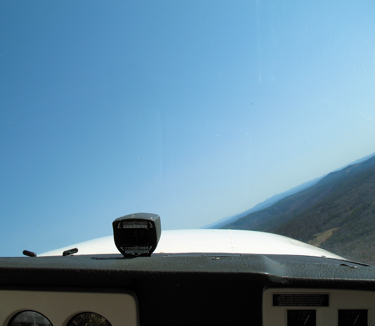Subscriber question:
"When you roll into or out of a turn, how do you know how much rudder pressure is needed for a coordinated turn?" — Richard D.
Rod:
 “When I ask this question of pilots at seminars, only one out of ten gets it correct. Now, did I hear you say that you look at the ball in the inclinometer (or turn coordinator) to tell you how much rudder pressure to use when you roll into a turn? You said it, didn’t you? Don’t deny it.
“When I ask this question of pilots at seminars, only one out of ten gets it correct. Now, did I hear you say that you look at the ball in the inclinometer (or turn coordinator) to tell you how much rudder pressure to use when you roll into a turn? You said it, didn’t you? Don’t deny it.
The fact is that the inclinometer isn’t very accurate when entering or exiting a turn. There are several reasons for this, one of which is the instrument’s location on the panel as well as the ball’s inertia and the liquid in its travel tube that dampens its motion. This is why the ball can lag in response to control inputs or, in a very temporary way, improperly represent the coordination of your control inputs. Once a turn is established and stabilized, however, then this is no longer an issue and the inclinometer is generally quite accurate.
So how do stick and rudder pilots determine the amount of rudder to use when entering or exiting a turn? They simply look directly ahead of them over the panel, at a point directly above their seated position, then roll right or left while simultaneously applying just enough rudder pressure to keep the nose from yawing in the opposite direction of turn. That’s right. It’s a visual thing. No inclinometer needed.
As the airplane rolls at a moderate rate about its longitudinal axis into the turn, the nose appears to remain stationary until a moderate bank is reached. I know that this might seem strange, but this is actually how it appears to you if you bother to look at it. Yes, the nose begins to move in the direction of bank as the airplane overcomes its inertia and begins to turn. But, because of this inertia, the nose actually appears to remain stationary during the roll in. Your job is to apply enough rudder pressure to keep the nose from yawing opposite the direction of roll. Doing so means that your roll-in is coordinated. This is how you roll into a turn.
When you roll out of a turn, how do you know how much rudder pressure to apply to keep rollout coordinated? Did you say, look at the inclinometer? Don’t deny it…OK, you didn’t say that – very good. It turns out, you use the same method you used when rolling into a turn. When you reach the point of the turn where you desire to rollout, you simply apply aileron in the direction you want to roll and use sufficient rudder to keep the nose from yawing opposite the direction of roll.
If you’re established in a right turn and want to roll into wings-level flight, you’ll simultaneously apply left aileron and sufficient left rudder pressure to keep the nose from yawing to the right (opposite the direction of roll) during the rollout.”
Have you ever practiced rudder coordination exercises with an instructor?
